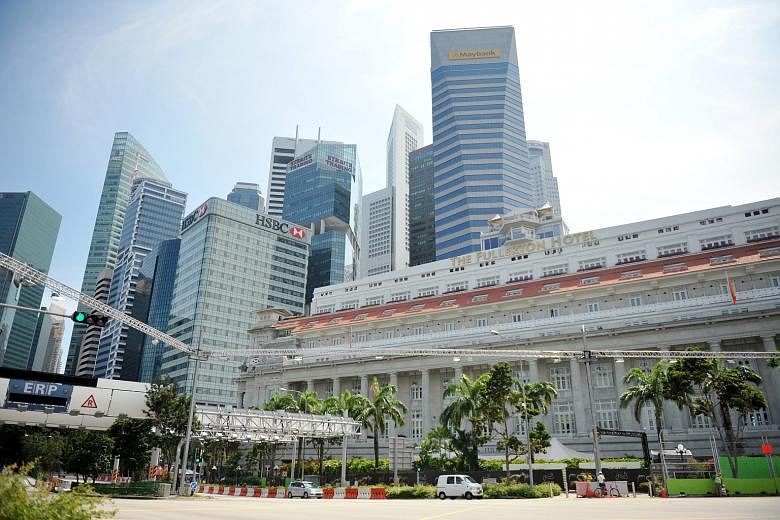Slowing global growth, the emergence of innovative finance start-ups and more non-performing loans are combining to create a "powerful storm" for the Asia-Pacific banking industry, consulting firm McKinsey & Company has warned.
Over the past decade, banks in the region have grown to amass a profit pool that hit more than US$1 trillion (S$1.34 trillion) last year, the firm noted in its latest annual Asia-Pacific banking review.
However, this "golden decade" is ending and the financial industry should be prepared to face slower growth and greater challenges in generating profits, it added.
The industry faces three main threats, McKinsey said. First, the economic slowdown rolling across the region will affect banks and their customers, especially in the corporate sector.
As a result, it expects banking profit growth to slow from 10 per cent annually between 2011 and 2014 to 3 per cent between 2016 and 2021.
Second, financial technology, or fintech, start-ups offering products such as payment systems and lending platforms, as well as established companies from outside the industry, such as Chinese e-commerce giant Alibaba, are encroaching into traditional banking territory.
These "attackers" have pressured banking profit pools and taken away customers, McKinsey said.
Third, an increasing volume of non-performing loans is putting added stress on banks.
In China, India, Indonesia and Japan, the value of stressed assets grew by US$90 billion between 2011 and 2015, reaching a combined total of about US$400 billion, the consultancy noted.
Between 2007 and 2011, the stressed assets in these countries grew by 0.1 per cent a year, while between 2011 and 2015 they grew by 6.9 per cent a year.
McKinsey said banks in Asia would need to raise US$400 billion to US$600 billion in additional capital by 2020 to cover losses from such non-performing loans while also maintaining their capital adequacy ratios - the capital buffer mandated by law.
To survive the storm, McKinsey advised that banks focus their strategies on three "clear pockets of growth" - services for the unbanked and underbanked, an expanding affluent middle class, and the emerging importance of small and medium-sized enterprises to corporate banking.
With margins under pressure, banks must also rapidly drive digitisation, especially to control costs, the consultancy added.
Meanwhile, banks must also find ways to strengthen their balance sheets by addressing the growing volume of non-performing assets. Banks can explore creating asset management companies as a short-term solution, while working to improve risk management provides a longer-term fix, McKinsey said.
And banks must rethink their organisational structure and culture, it added. For example, they should form alliances with fintech firms and become more flexible and nimble in bringing out new products and services much faster than in the past.
Banks that take these steps will place themselves in good stead for the future, McKinsey said.
"The most aggressive banks will not merely survive the turbulence; they will be strengthened by it."


